All these wonderful things set an amazing table, just waiting to be explored. But more than these separate aspects, it is the culinary culture of the Hachinohe Area itself that makes the region so interesting and unique.
The area has long been afflicted by cool summer winds that made rice cultivation frequently fail until modern strains of cold-hardy rice plants were introduced. Called the yamase winds in the local dialect, they caused the people of the area to have to utilize other staple foods other than rice to survive. This created a culinary tradition based on ingredients like wheat, buckwheat, and other alternatives, rather than the traditional Japanese rice-based culture.
The influences of the yamase winds paired with the creative and spirited character of the people of Hachinohe have led to the creation of amazing dishes unlike anything else in Japan. Increasing international influences have also continued to develop and diversify the community and food of the area, making the culinary culture here anything but static.
Below is a list showcasing a few of the many foods you should not miss out on while in the area. So pull up a chair to the table, prepare for an unforgettable meal, and eat something new.
» Hachinohe’s Bustling Fish Market Hasshoku Center
» Eat the Best & Freshest Food of the Area at the Morning Markets
» Explore the Alleyways of Hachinohe’s Yokocho
Hachinohe Senbei-jiru
(Hachinohe Soup with Wheat Crackers)
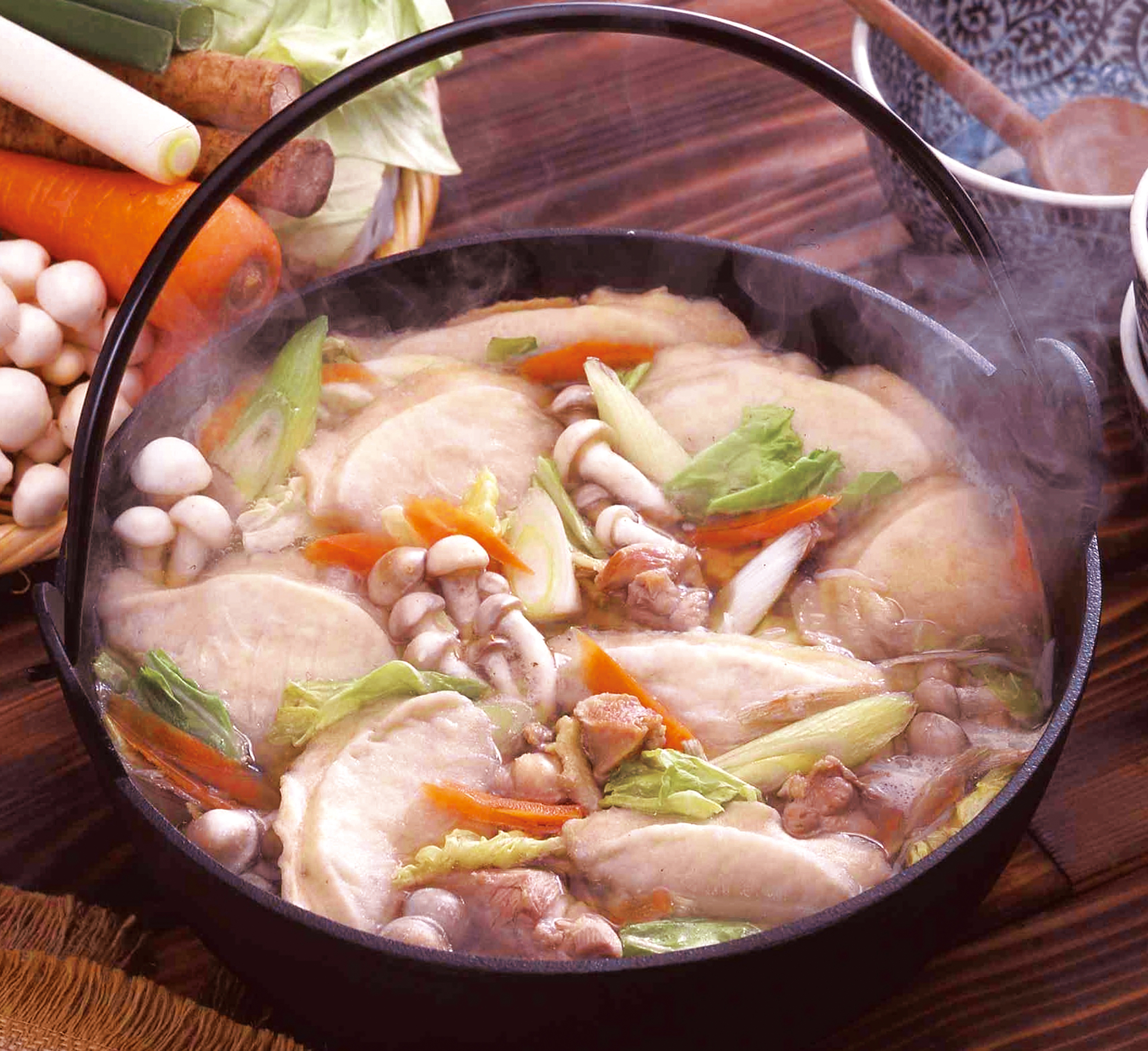
Hachinohe senbei-jiru is the most famous dish of the Hachinohe area. It is prepared by making a chicken or mackerel based stock in which a variety of vegetables are simmered to create a rich flavored soup. To finish the dish, Nanbu senbei, local specialty crackers made from wheat, are cracked, added in, and allowed to cook to just al-dente.
The addition of the Nanbu senbei enriches the soup and turns the dish into a hearty meal. Although perfect for the cold winters of northern Japan, this classic Hachinohe dish has such a comforting taste that it is eaten throughout the year. It has become so popular that now a variety of Hachinohe senbei-jiru kits are sold so you can even try making the dish at home.
» Hachinohe Senbei-jiru Laboratory’s website (Japanese)
» Restaurants in Hachinohe That Serve Hachinohe Senbei Soup (Japanese)
Ichigo-ni (A rich seafood soup
of Abalone & Sea Urchin)
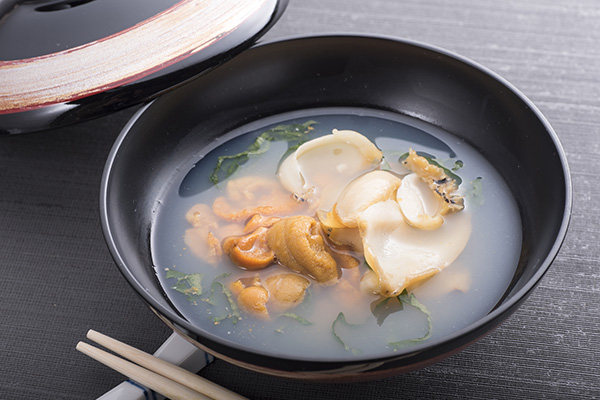
This extravagant seafood soup of sea urchin and abalone was created by the fishermen of the Hachinohe area. The coast of southeastern Aomori and Northern Iwate is rich in sea urchin and abalone, so fishermen could make this dish easily with common ingredients after a long day at sea. The name Ichigo-ni means “strawberry soup,” and is said to have come from the fact that the sea urchin in the opaque soup resembles wild strawberries as seen in the morning fog. One bite of this soup and the rich flavor of the sea urchin and abalone will quickly conjure up images of the sea.
These days, the dish is enjoyed as a gourmet soup at high-end restaurants. It can also be found in canned form and has become a popular gift item.
» Restaurants in Hachinohe That Serve Ichigoni Soup (Japanese)
The Most Squid in Japan
The port of Hachinohe continuously catches the most amount of squid in Japan. In addition to the neon flying squid, or akaika, which is the main type of squid brought into the port of Hachinohe, all kinds of squids are caught throughout the year. These include the Japanese flying squid, surume-ika, from the nearby sea starting in July, and spear squid, yari-ika, during the winter months.
During the summer months when the squid fishing concentrates on the area of the nearby sea, a special dish called Afternoon Caught Squid Sashimi begins to appear on the menu of restaurants in town. It consists of usually a whole squid that was just freshly caught that same afternoon cut in the sashimi-style. It is famous for its firm, almost crunchy texture and exquisitely fresh taste that can only be had when the squid is in season.
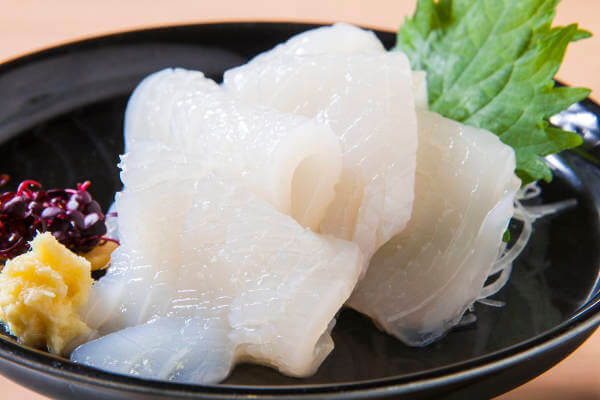
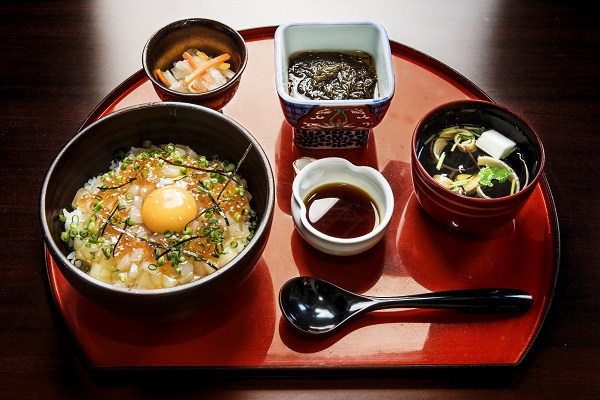
» Hachinohe’s Yokocho Bar Alleyways
» Restaurants in Hachinohe That Serve Squid (Japanese)
Hachinohe Maeoki Saba (Fresh Hachinohe Mackerel)
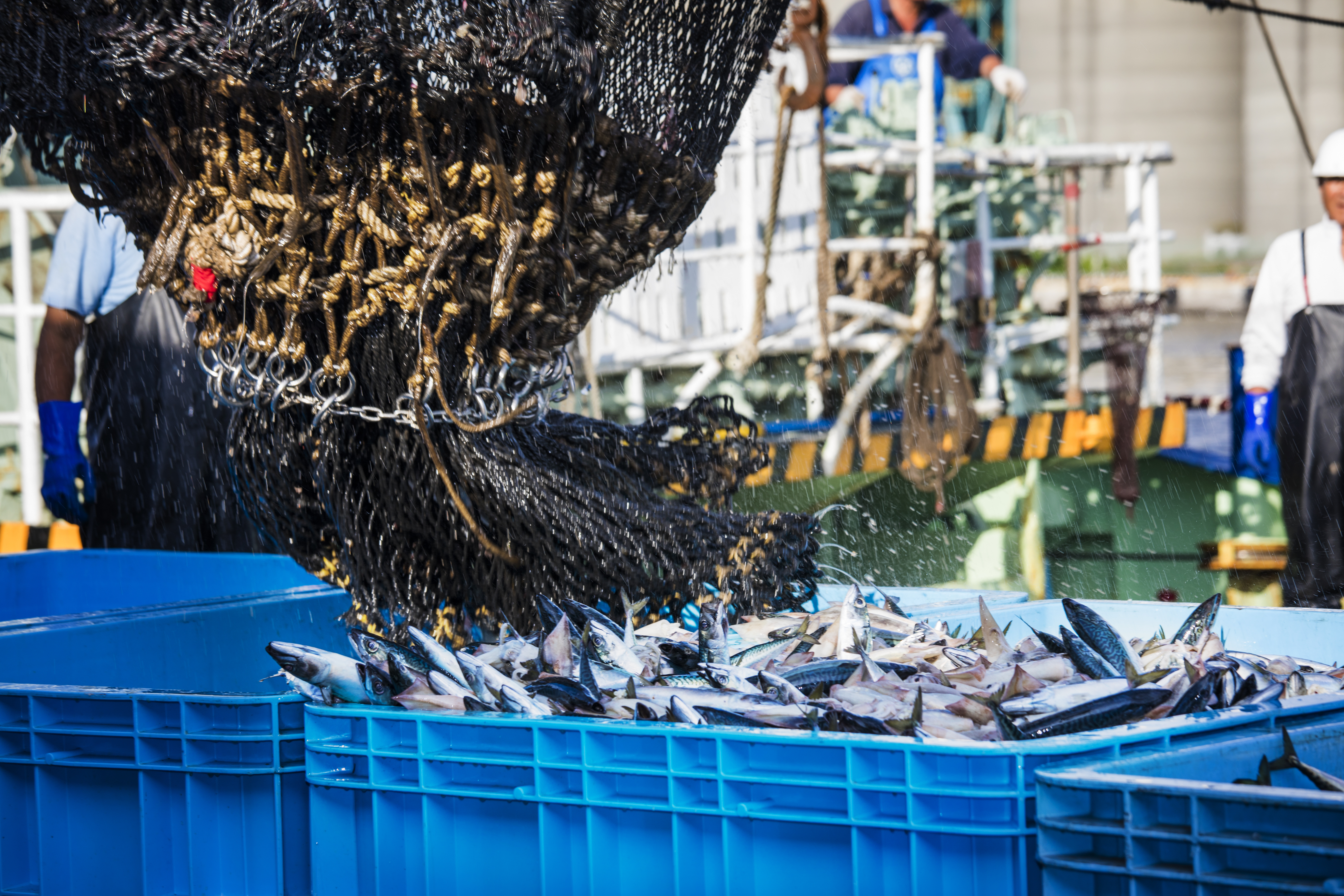
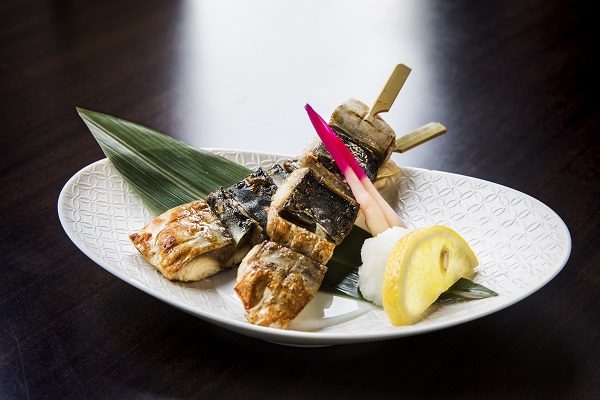
The mackerel caught off Hachinohe in the waters of the Maeoki are said to be amongst the most rich-tasting in Japan. This is due to their high-fat content, making the fish full of great nutrients as well as flavor.
Fresh caught Maeoki mackerel, or saba in Japanese is delicious when served raw as sashimi. But one of the best ways to enjoy the high-quality fattiness of the fish is to have it simply grilled and salted, which causes the skin to slowly crisp and the meat to become rich and succulent. Walking along Hachinohe’s famous drinking alley, the Miroku Yokocho, you can find small stall-like restaurants with pit style grills called irori that slow roast skewers of the fish.
Mackerel is one of the main types of fish caught in the Hachinohe Area and has played an important role in its history and culture. As such, it has made its way into countless dishes of the area. From pickled mackerel, pressed mackerel sushi, to even deep-fried mackerel croquettes, the people of Hachinohe are continuously devising new ways to enjoy this delicious fish.
» Hachinohe Okimae Saba Brand Promotion Committee website
» Restaurants in Hachinohe That Serve Maeoki Mackerel
Hachinohe Bouillabaisse
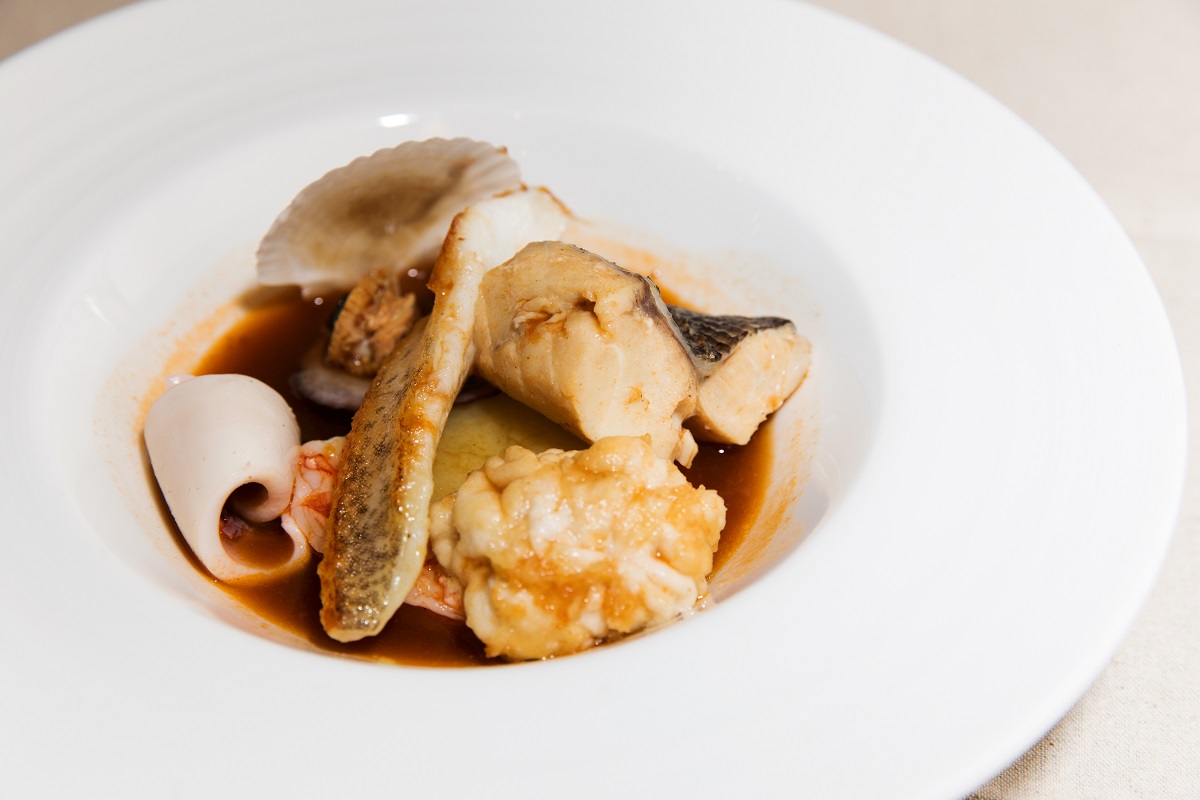
The Hachinohe Bouillabaisse Festival is a relatively new tradition in the city of Hachinohe. It is a yearly event that takes place every winter and was started after the 2011 Great East Japan Earthquake & Tsunami as a way to reinvigorate and promote the local fishing community.
During the event, various restaurants and hotels design their own unique versions of the classic french dish of bouillabaisse. The catch is that the chefs of these establishments have to follow two rules, and these rules make the dishes they produce 100% Hachinohe. There are two rules for Hachinohe Bouillabaisse are:
(1) The bouillabaisse must be prepared with at least four types of seafood that were brought into the Port of Hachinohe. As much as possible, locally grown vegetables should be used.
(2) Each restaurant must prepare a signature dish that utilizes the soup of the dish in an original way to create a second, subsidiary dish.
Following these guidelines, the chefs of the city take a quintessentially French dish and use their skills and creativity to create something that celebrates Hachinohe and its community. Different restaurants, ranging from Italian to traditional Japanese to Portuguese, utilize their unique influences to produce continuously more exciting dishes each year. The event has grown in scope and popularity and is now one of the most looked forward to culinary events of the year.
» Hachinohe Bouillabaisse official website
Hachinohe Ramen
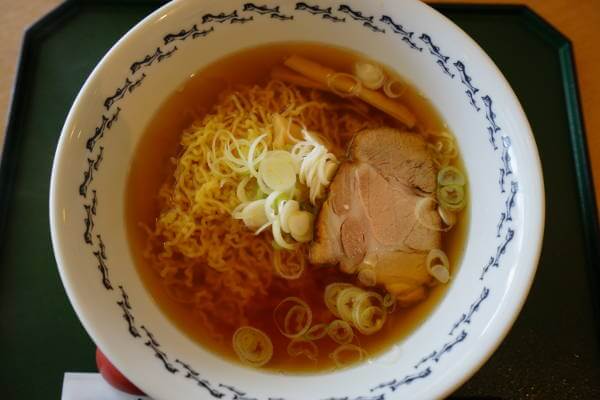
Hachinohe Ramen has a history of over 70 years and was originally made by immigrants from China that came to Hachinohe before WWII. This classic Hachinohe favorite is made using a light clear broth made from chicken bones, pork bones, dried sardines, and soy sauce. Curly ramen noodles are used in the dish to help pick up the light broth, and it is the perfect thing to eat during the cold nights of Hachinohe.
There are over 20 shops that serve Hachinohe Ramen in the city, so if you are looking for a ramen dish that is not overly oily or heavy, then this is the one for you.
The New Star of the Hachinohe Food Scene: Hachinohe Maeoki Blowfish
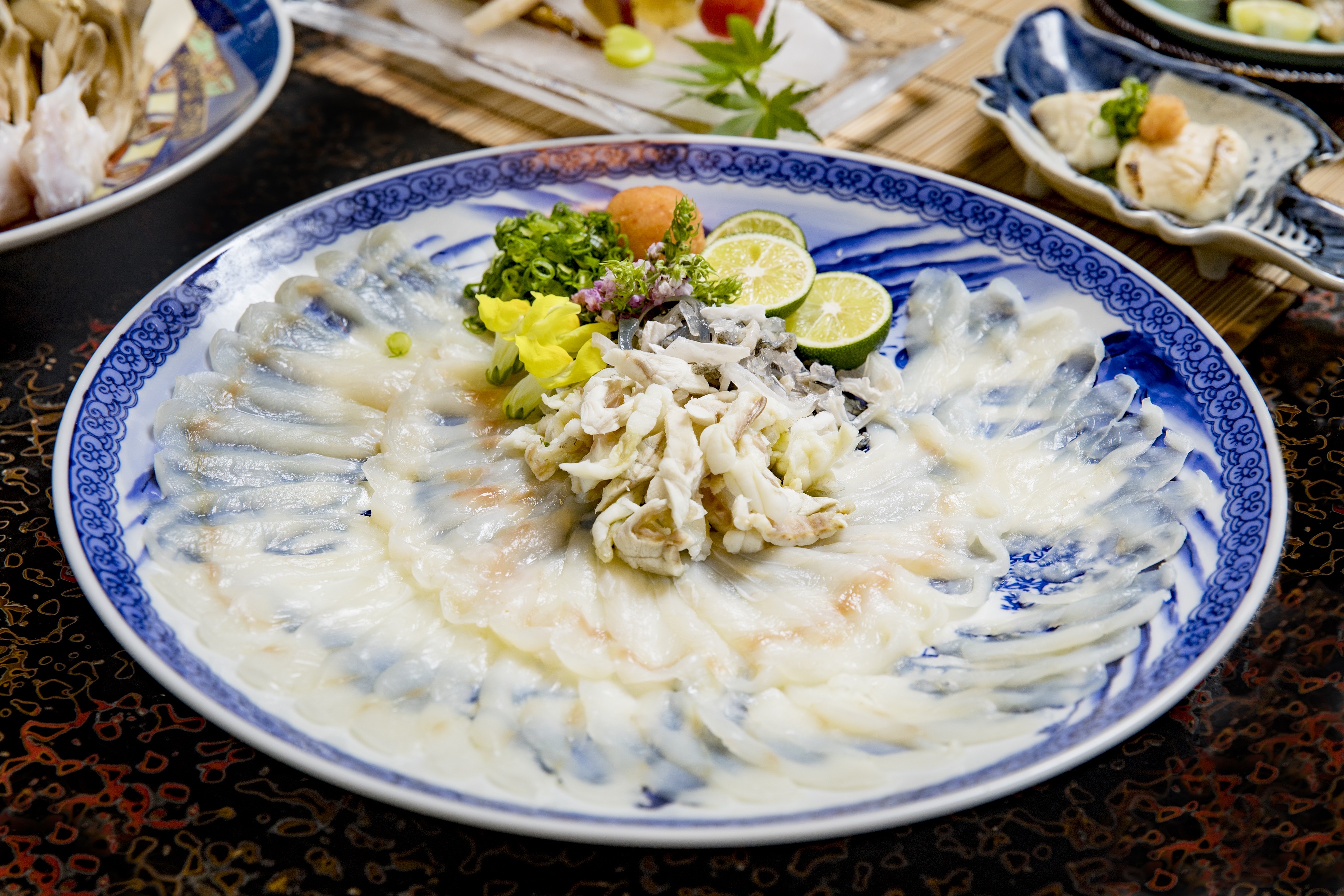
The Maeoki waters off the coast of Hachinohe aren’t just home to amazing mackerel, but they are also home to great quality blowfish as well. In Japan, the season for blowfish is traditionally held to be winter. But the cold waters off of Hachinohe’s coast allows the blowfish in this area to come into season around early summer. The soft pale color of their flesh hides a richly deep flavor; it is this and their reasonable price that makes them a local favorite.
Every year from May to June the Hachinohe Maeoki Blowfish Festival is held. During the festival, different restaurants provide special course-menus in which you can enjoy the great flavor of blowfish prepared in different ways at affordable prices. When considering the outrageous prices that blowfish can fetch in other parts of the nation like Tokyo, it is no surprise that there are stories of people taking the Shinkansen bullet train up to Hachinohe just to eat blowfish during the festival.
Hachinohe’s Seafood Ramen: Iso Ramen
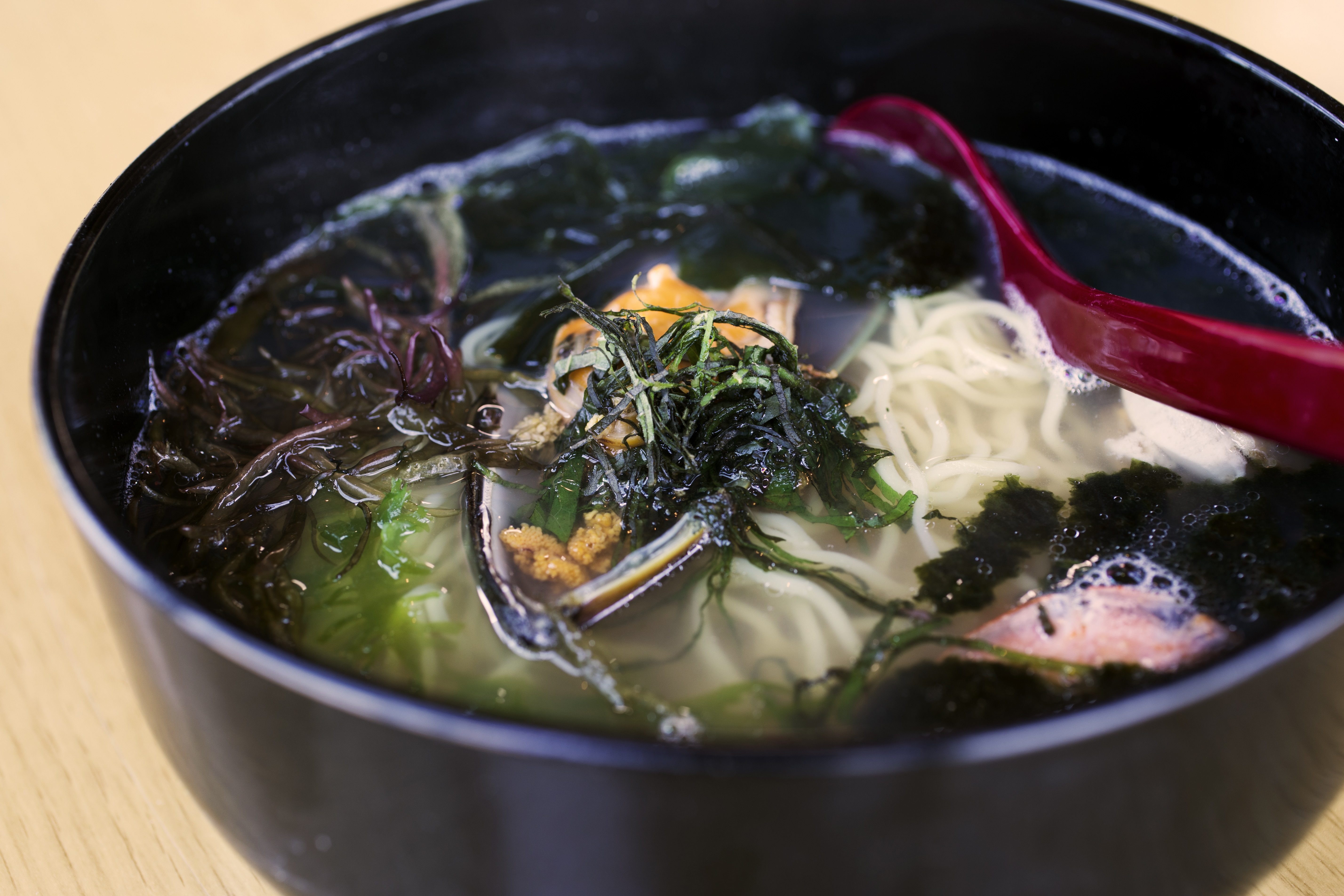
Hachinohe’s Iso Ramen is a type of seafood ramen made with scallops, muscles, shrimp, seaweed, sea urchin and more. It’s a specialty that can be found in the cafés and restaurants that dot the Tanesashi Coast. Made with flavorful ingredients like sea urchin and topped with fragrant perilla leaf, the Iso Ramen of Hachinohe is said to have a unique flavor that is emblematic of the coastline from where it comes. One taste will be sure to conjure up visions of the rocky coastline of Tanesashi on a sunny summer day.
» Restaurants in Hachinohe that serve Hachinohe’s Iso Ramen
A Seafood Bowl Worth Waiting for:
the Hirame Zuke Don
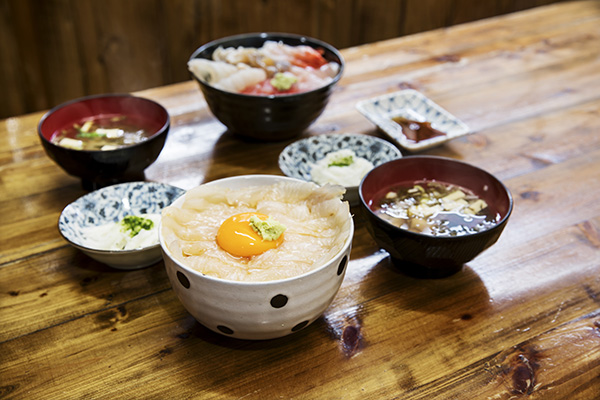
Hachinohe certainly has an endless list of entries when it comes to different types of seafood that come through its port. Much like other entries on this list, the flounder caught in Hachinohe is said to be some of the best in the whole country.
One of Hachinohe’s most famous and popular donburi, or rice bowl dishes, is the Hirame Zuke Don, or Vinegared Flounder Bowl. The bowl is made by taking Hachinohe’s high-quality flounder, marinating it in a vinegar-based sauce, placing it over rice, and topping it with an egg yolk and dash of wasabi. The rich mellowness of the egg yolk adds a deeper layer to the high-quality flavor of the flounder, as the vinegar dressing brings out the fish’s sweetness. The bowl is becoming increasingly popular outside of the area, and the Minato Shokudo, one of the restaurants that serve the dish, is becoming more and more famous. If you want to try the dish though, be ready to wait. There is almost always a line for this dish at the restaurant.
» Find Restaurants in Hachinohe that serve the Hirame Zuke Don
Hachinohe Sushi
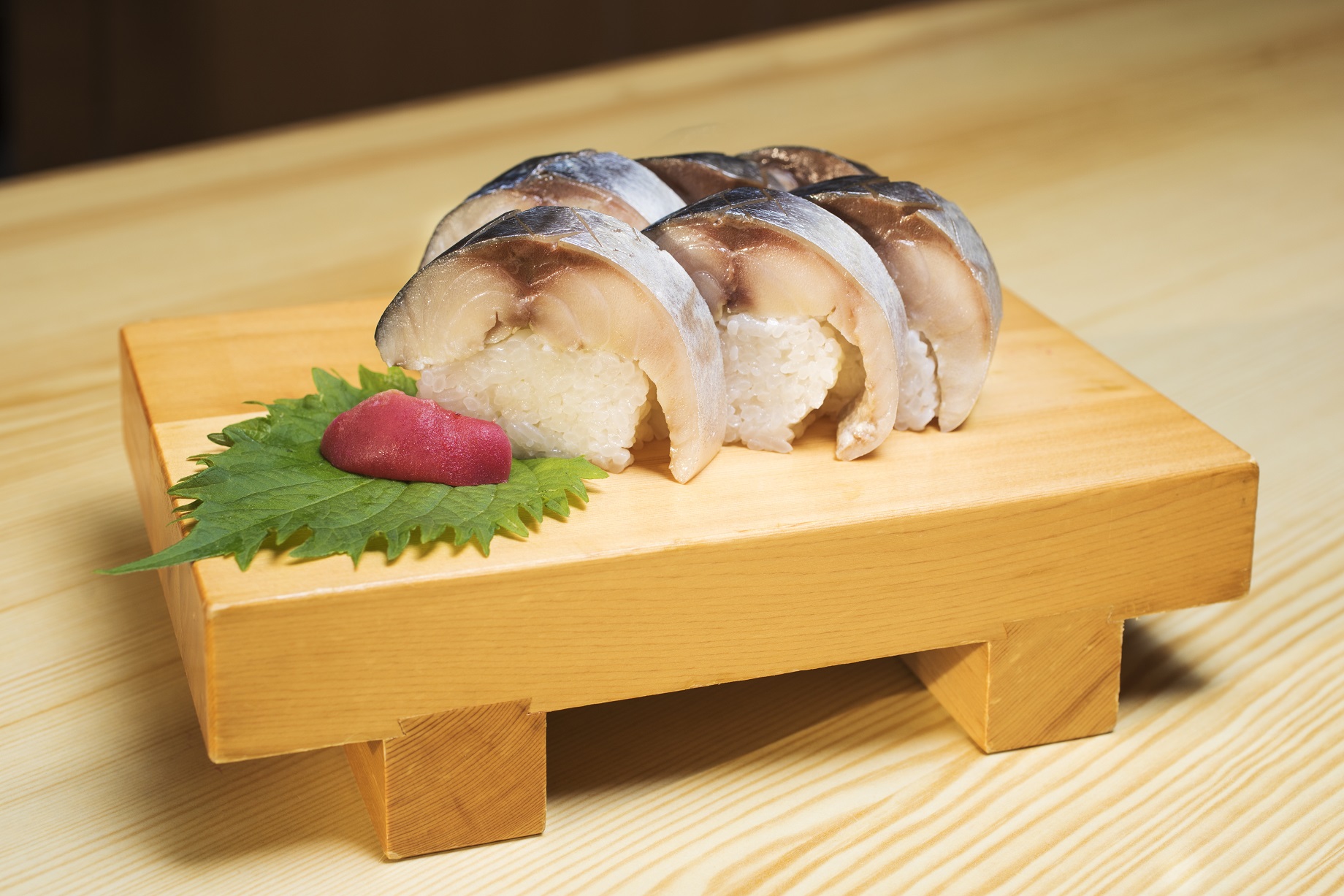
It comes as no surprise that Hachinohe, being the fishing port town that it is, is home to some amazing sushi. Depending on what the season is, there is always a new and fresh fish to be tried. Restaurants participating in the Hachinohe Sushi project have each agreed to provide a set menu of 11 pieces of high quality, in-season, fresh sushi for the price of 3,000 yen.
The affordable price of the set ensures that everyone can try some of the city’s best and in-season fish at any time of the year. Another option under the project is the Squid & Mackerel Tasting Set, in which you can order a set of three pieces each of squid and mackerel for the price of 1,380 yen.
» Read more about the Hachinohe Sushi Initiative and see a list of participating sushi restaurants
More Hachinohe Specialties
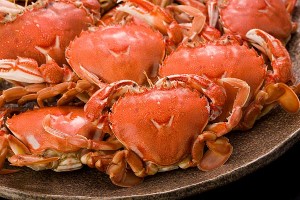
●Hiratsumegani
(Ovalipses Punctatus)
Better known as hiragani, you can often see this crab in markets as an early-summer delicacy. Its flavorful brown meat is a treat to the palate.
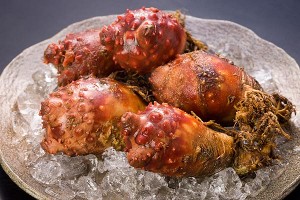
●Hoya / ascidiacea (sea squirt /sea pineapple)
Known for its unique flavor, sea squirts are often enjoyed with cucumbers and vinegar. Their nightmarish exterior hides a delicious flesh that pairs perfectly with sake.
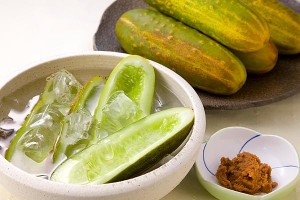
●Nukazuka Cucumber
The Nukazuka cucumber is a traditional heirloom vegetable that has been grown in the Nukazuka area of Hachinohe. Its crisp texture and bitter taste are enjoyed by many.
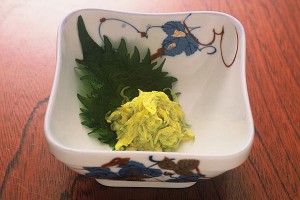
● The Edible Abokyu Chrysanthemum
The dried petals of the edible chrysanthemum Abokyu have a beautiful fragrance and sweetness. It is commonly enjoyed by the locals of the Hachinohe region as a topping for miso soup or in special side dishes with vinegar.
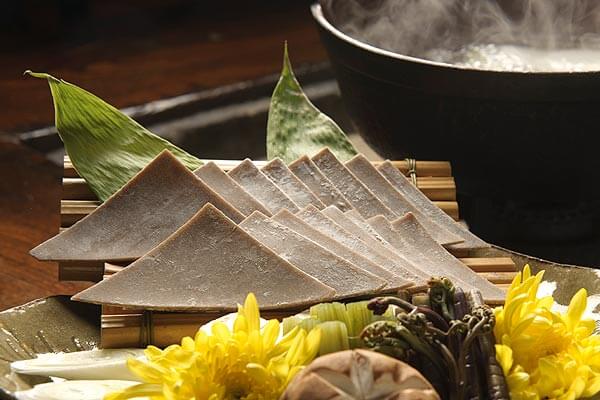
●Soba-kakke &
Mugi-kakke
These two unique local dishes are made by cutting buckwheat (soba) or wheat (mugi) dough into triangle or square pieces. The pieces are then boiled and eaten with green onion miso or garlic miso. The origin of the name kakke is subject to some debate, but it is believed to come from the Japanese noun kakera, which describes the pieces of leftovers that come from cutting buckwheat and udon noodles.
●Fruit from the Hachinohe Area
The Nango Area in Hachinohe city is well known for its fruit cultivation. It is said that the wide range of temperature differences that the area experiences throughout the year allows for a wide range of fruits to be grown. Strawberries, cherries, blueberries, apples and more are grown in the area, ensuring that there is always something fresh and delicious in season. The good quality, tastiness, and reasonable price of the local fruits grown in the Hachinohe area has led to their growing popularity inside as well as outside the prefecture.
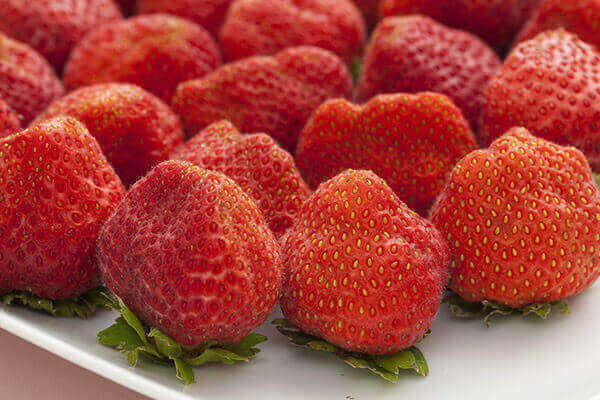
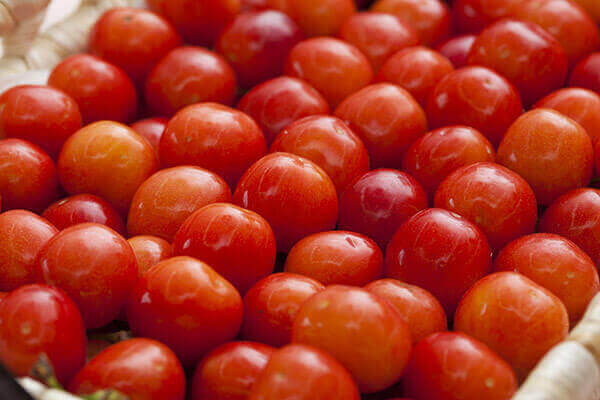
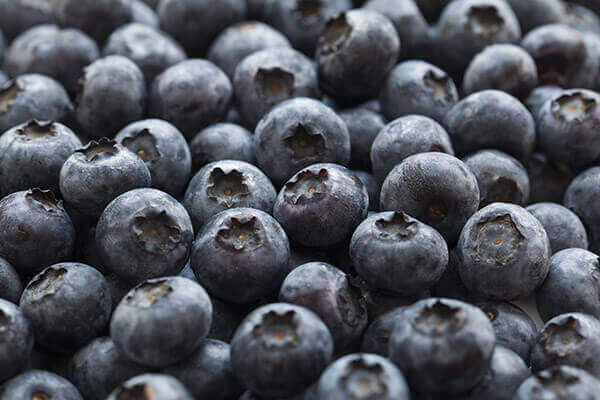
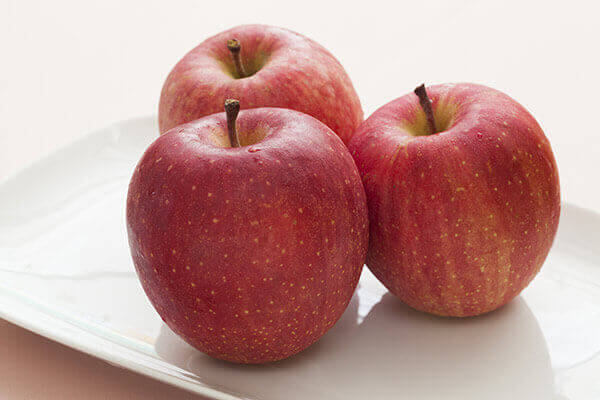
Yamase and the Food Culture of Hachinohe
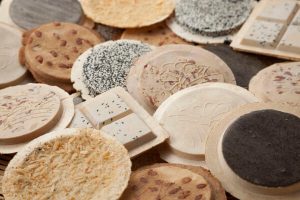
Yamase is the cold and humid wind that blows between spring and early summer along the Pacific Ocean coast. Yamase wind is detrimental to wet-field rice and other agricultural products, and the people of Hachinohe have long been plagued by cold-weather damage and poor harvests brought on by the Yamase winds. To overcome this problem, Hachinohe has focused on growing cereals, such as wheat, buckwheat, millet, and barnyard millet, out of which developed the Konamon (flour) culture of the area. The representative dish of the area’s Konamon culture is the Nanbu senbei, a type of cracker-like food which is prepared by mixing wheat flour, salt, and water together and grilling it in a cast iron mold.
